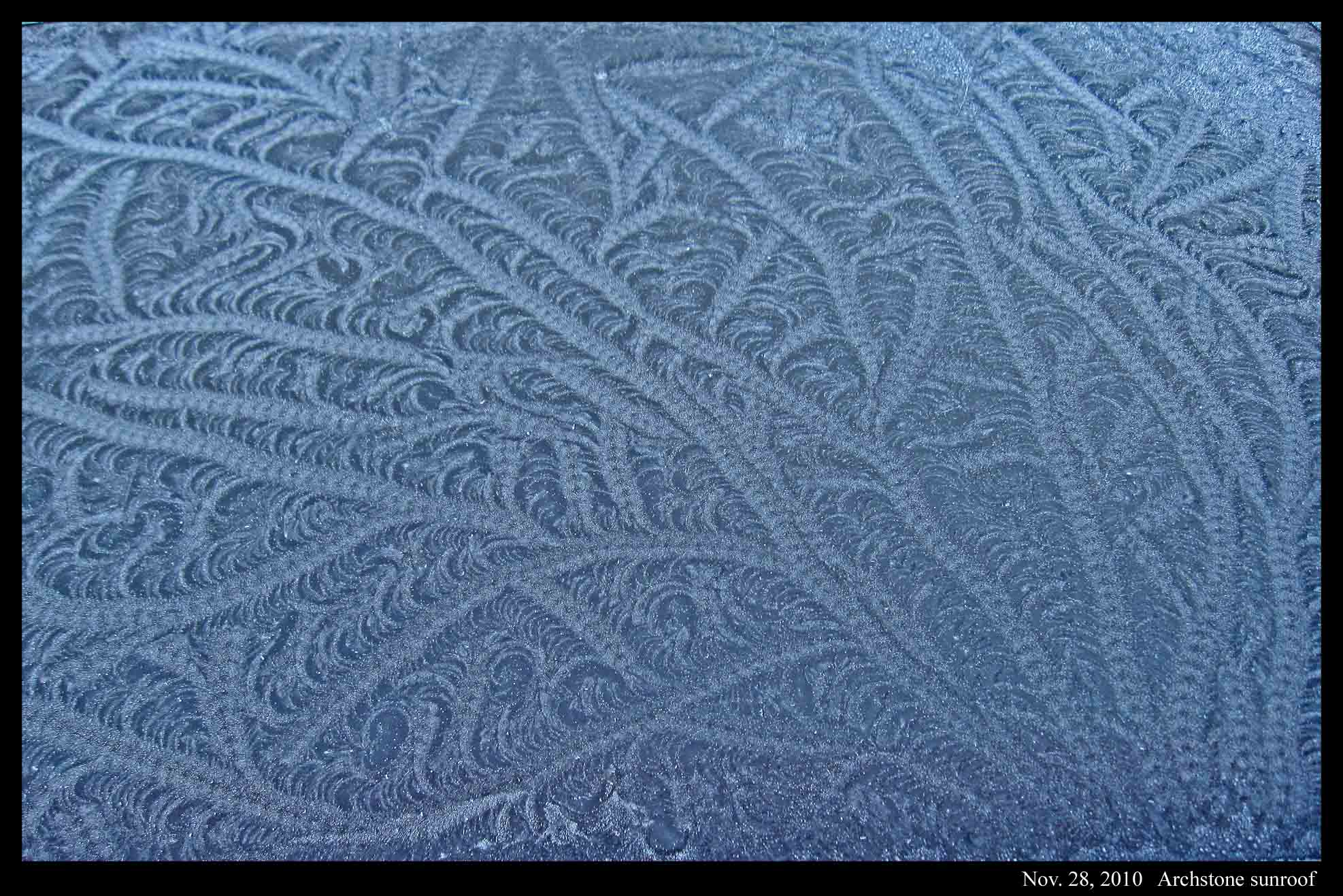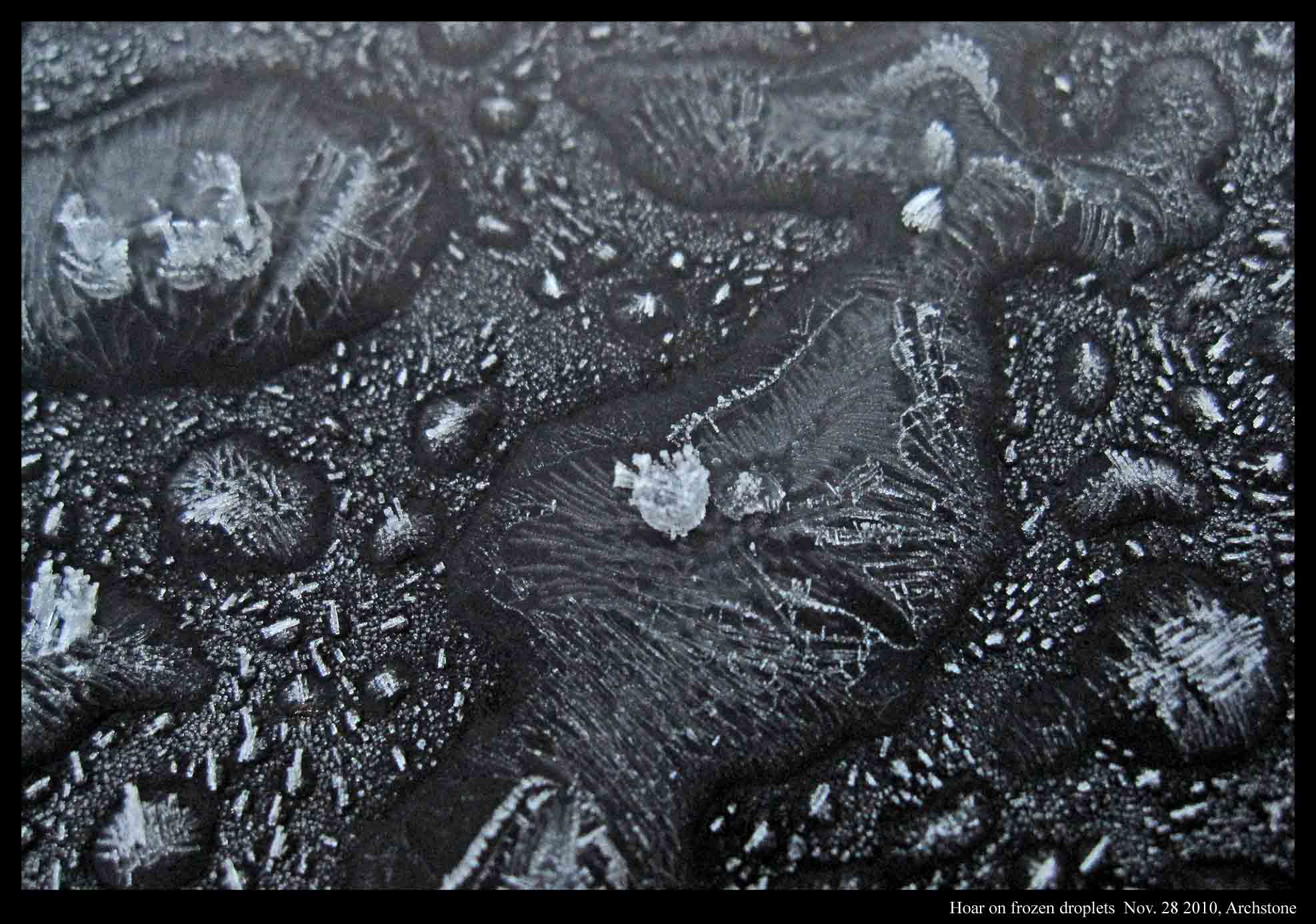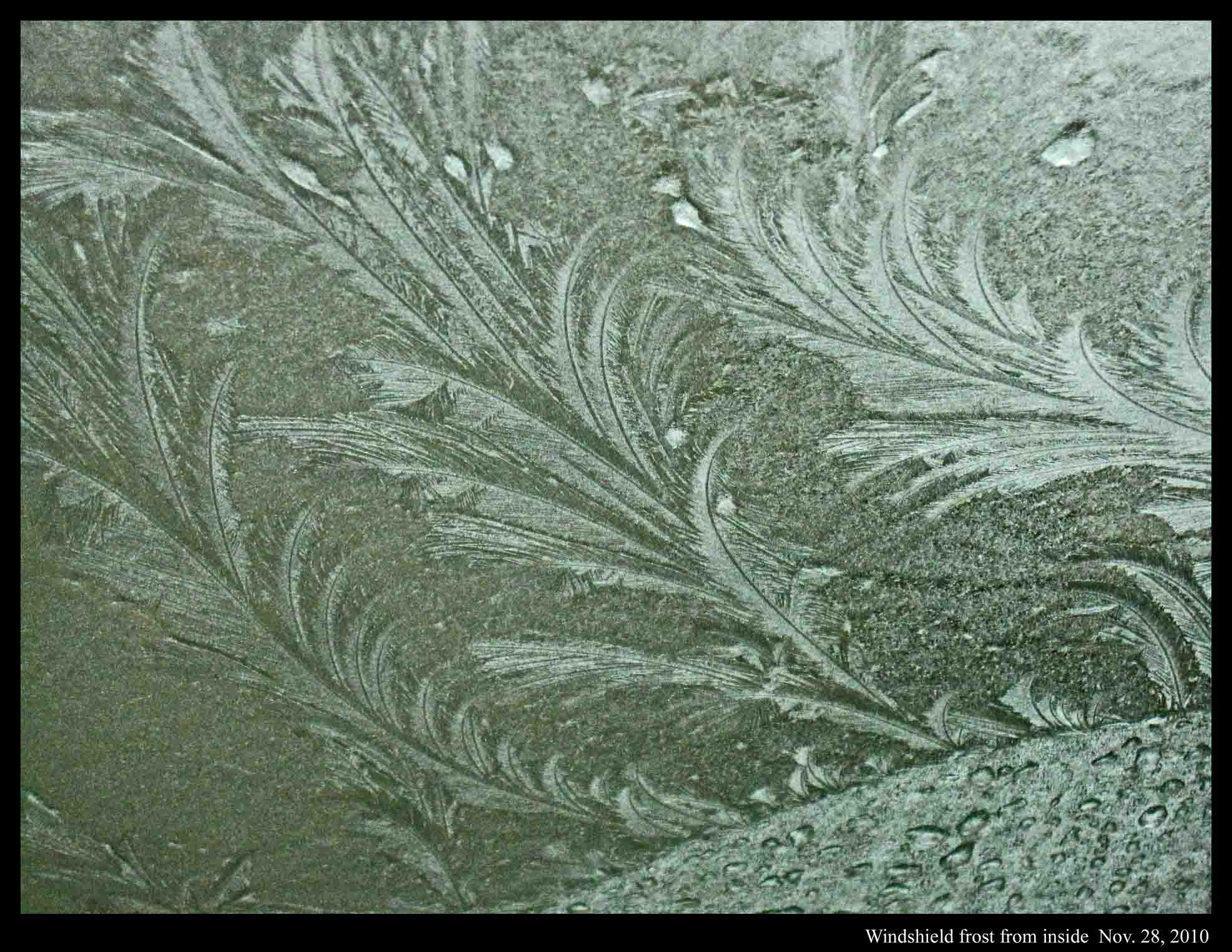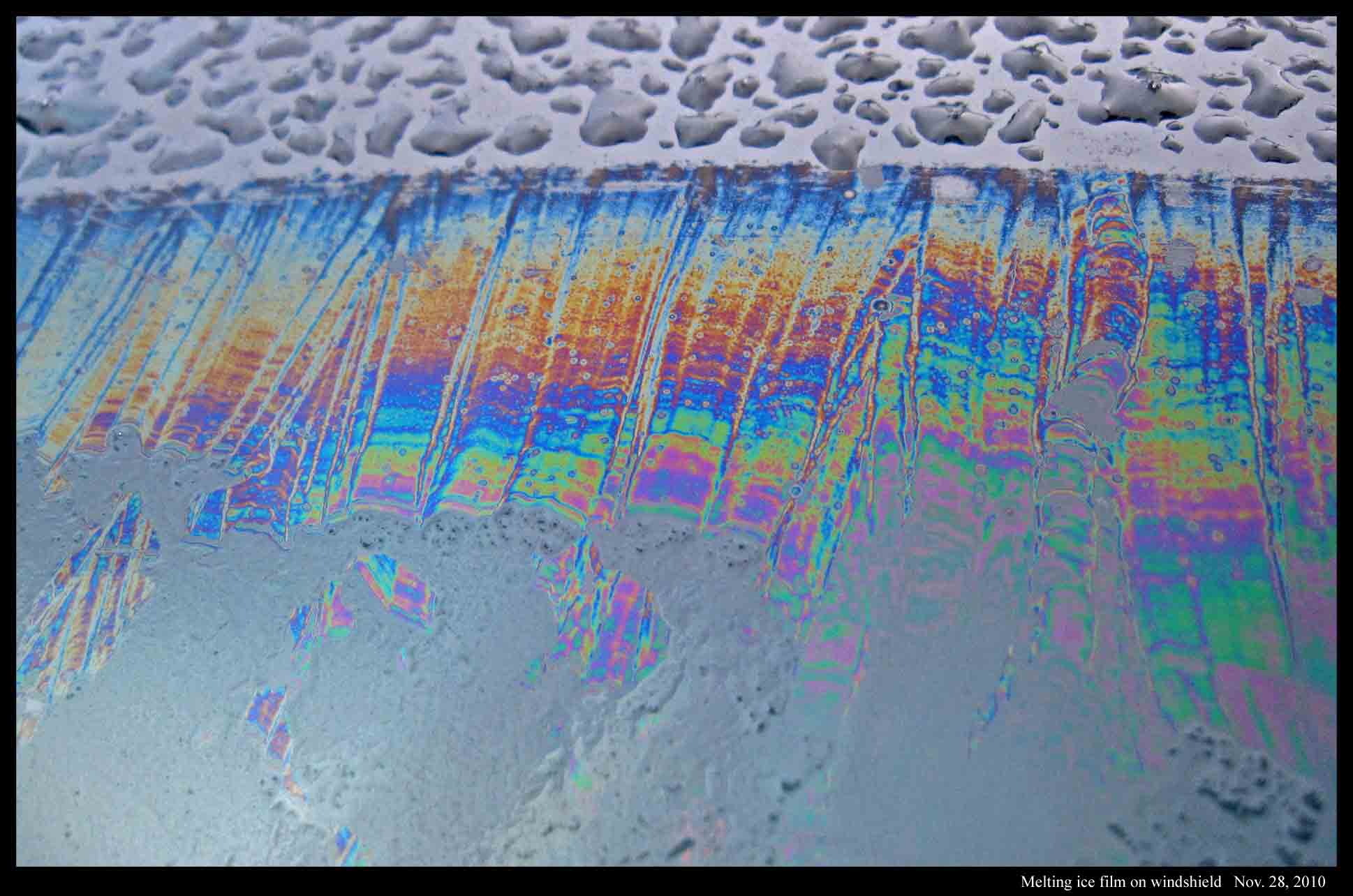| « Hoared Hail and Coraline Cups | The Window of Many Cacti » |
More Tales of Mystery and Observation
When I stepped out early Saturday morning, the air seemed relatively warm, particularly compared to the cold snap we had last week. Indeed, it was much warmer, and yet the parking lot in our apartment complex had a glaze that was much more dangerous than that during the cold snap.
But it was the frost that I noticed. Of course, the air was relatively warm, but the clear sky cooled the surface. Recently, snow melted, leaving plenty of open water to evaporate – perfect conditions for film frost and hoar.
I saw “striped-tail” film frost(1) on two car roofs, both times on the sunroof glass. Why only on the glass? Perhaps the glass, being a poorer conductor of heat, had a lower surface temperature. This lower temperature would have produced a thicker film of water, and the thickness of the film seems to influence the pattern. The bigger mystery though is the cause of the pattern. In a short online article(2) last year, I suggested a cause for the stripes on each tail, though I can offer no explanation for either the nearly uniform width of the tails or the meandering. In the case below, the pattern is dense with lazily wandering striped tails. When I look at it, I think of seaweed. The metal car surfaces often had nice curving film-frost with dense hoar, while others had or condensed droplets with more isolated, spiky hoar. The latter appeared on my own car.
Interestingly, there appears to be smaller frozen droplets on top of larger droplets, indicating that a second freezing event occurred. (See the one near the center of the image.) One might guess that a droplet dripped down from some overhead object, and yet there was only open sky above. Of course, a brief shower may have passed in the night, but I’d expect to see evidence of it elsewhere. So, somehow smaller droplets condensed on top of larger frozen droplets and later froze. And because in this icy microworld, the smaller frozen droplets stick up further above the surface, subsequent hoar grew mostly on the small droplets.
At the upper left and upper right, see the curved lines of spiky hoar, all standing up in formation. How to explain that? Where is the smaller droplet? It is almost as if a droplet started to freeze along it's outside surface and then shattered, leaving only a rim in places that sprouted hoar. Perhaps, or maybe it had another cause. One also sees hoar elsewhere, showing us that even lower-elevations in the icy microworld can sprout hoar.
My windshield, on the other hand, had more of a curvy film frost. Although the frost was on the outside, the clearest view came from inside. In the image below, you can see that the frost fronds sprouted at the edge of the region where the wiper blade swiped across. As to why they appear only in the swiped region, perhaps it’s because the initial liquid water film was more uniform than elsewhere. Or maybe the film was thinner. Another observation, another mystery. The next day, I mentioned the nice frost patterns to a man who works at our apartment complex. He expressed a common idea, a misconception, really, when he said that curvy frost patterns are extremely rare. I suspect many people expect such frost only on the inside of single-pane windows on very cold days. But it hardly takes much observational power to notice that curvy frost is in fact rather common on the outside of metal, glass, and other smooth surfaces that can readily cool to the open air.
When snow on a car roof loosens during warming and slides down the windshield, it can produce a thin uniform liquid film that shows nice interference colors – much like the interference colors of a thin oil film on a puddle. On this Saturday morning, I found that the melting of my windshield’s curvy frost film produced the same effect. Even as it melts, the frost shows beauty.
- JN
References
1) See “BEDFISH: Revising an old Idea for Classifying Surface Ice Forms”, the posting on January 31st, 2010.
2) “The Frosty WHIMS of Bentley”, Snow Crystals Vol. #16 (February 22, 2010) at http://snowflakebentley.com/WBnews.htm#n16
2 comments
Hello,
I was wondering what type of camera you use to take your photos? Is is possible to take photos of frost with a digital camera? Can digital cameras be taken out in the cold? These pictures are just beautiful! I love the snowflake pictures, please keep them coming.
Thank you,
Cora Leights

Hi Cora,
Mark does the snow-crystal photography. I think that he usually uses a film camera. I’ll ask him though.
About the frost photos, I use my little Canon Powershot digital camera. It seems to do fine in the cold - it’s just my fingers that have trouble… Anyway, some cameras could have problems, but it probably won’t hurt to give it a try with whatever camera you have. I used to use my wife’s compact Pentax digital camera, and it was also fine.
I hear that batteries don’t last as long in cold weather, but I haven’t had any special problems with that issue, as I might only spend an hour or two outside.
One thing to be careful about is the return of one’s camera indoors. Avoid bringing a cold camera to a warm, humid room. Or, if you do, keep it in a plastic bag until it warms up a little (which only takes a few minutes for a compact camera if one holds it tightly in their hand).
The snow photos are indeed beautiful. Thanks a lot for the comments.
Jon



